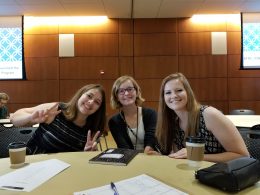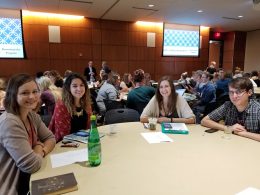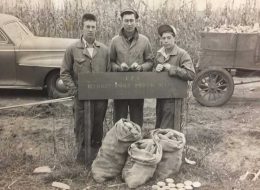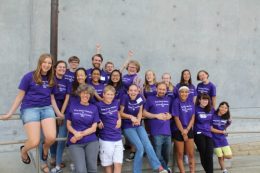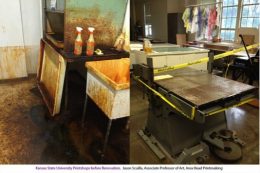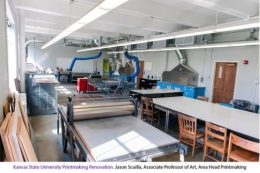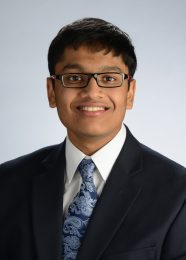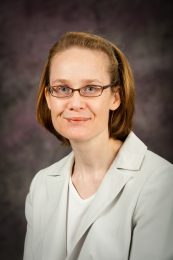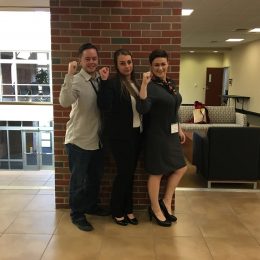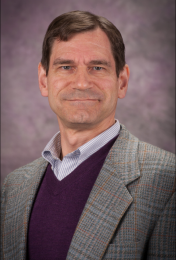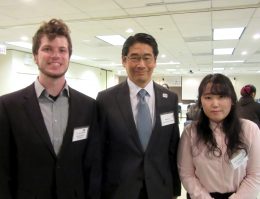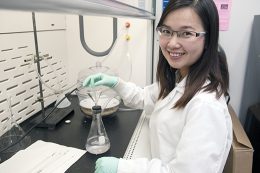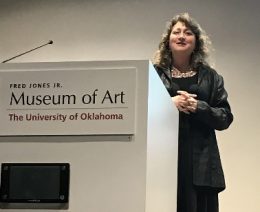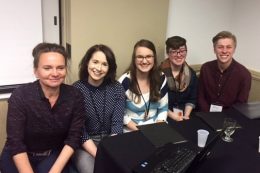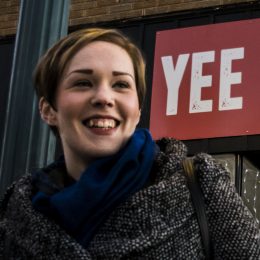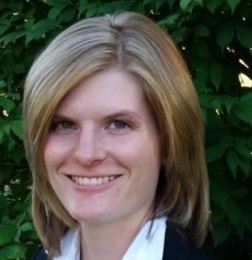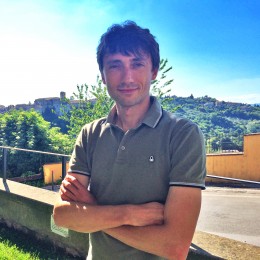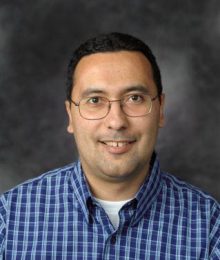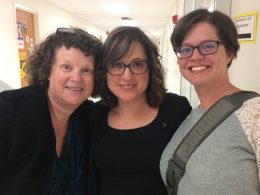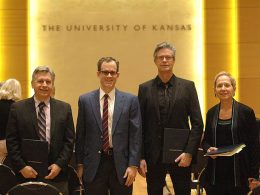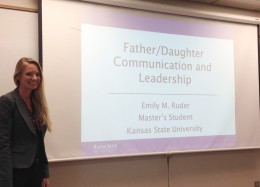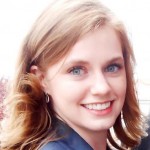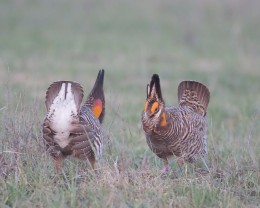In the College of Arts and Sciences, there are always big things happening. Here are some highlights from October 2017:
Journalism and Mass Communication
Sociology, Anthropology and Social Work
Aerospace Studies (AFROTC)
Eleven students and two instructors from the Department of Aerospace Studies traveled to Wright-Patterson Air Force Base in Dayton, Ohio, Sept. 16 to attend the United States Air Force Marathon and visit the National Museum of the United States Air Force.
 During the trip, students and faculty had the opportunity to tour a local innovation firm that is a part of the Wright Brothers Institute, participate in marathon activities and attend a barbecue with local Air Force and community leaders. Department Head Lt. Col. Heath Duncan and students John Nachtigall and Kendall Tindall competed in the 10K race and Assistant Professor Maj. Brad Caywood competed in the half-marathon. The students gained invaluable exposure to career options, networking and leadership opportunities within the Air Force and the technology sector throughout the trip. This event is organized and supported each year by retired Lt. Col. Joe Lask, a K-State and Dept. of Aerospace Studies alumnus living in the Dayton area.
During the trip, students and faculty had the opportunity to tour a local innovation firm that is a part of the Wright Brothers Institute, participate in marathon activities and attend a barbecue with local Air Force and community leaders. Department Head Lt. Col. Heath Duncan and students John Nachtigall and Kendall Tindall competed in the 10K race and Assistant Professor Maj. Brad Caywood competed in the half-marathon. The students gained invaluable exposure to career options, networking and leadership opportunities within the Air Force and the technology sector throughout the trip. This event is organized and supported each year by retired Lt. Col. Joe Lask, a K-State and Dept. of Aerospace Studies alumnus living in the Dayton area.
The department also finished in the top spot on campus for departmental 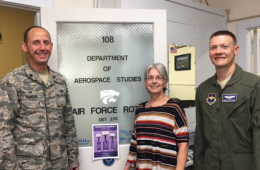 rankings based on activity for the 2017 K-State Movement Challenge. With an average daily step count of 18,492, Aerospace Studies beat out the Budget Office and County Agents NE Sector who finished 2nd and 3rd respectively. Lt. Col. Heath Duncan, department head, Maj. Brad Caywood, assistant professor, and Mary Jo McHugh, office specialist, comprised the three-person department team. McHugh finished 4th overall for the university individual step count with an average of 33,170 daily steps.
rankings based on activity for the 2017 K-State Movement Challenge. With an average daily step count of 18,492, Aerospace Studies beat out the Budget Office and County Agents NE Sector who finished 2nd and 3rd respectively. Lt. Col. Heath Duncan, department head, Maj. Brad Caywood, assistant professor, and Mary Jo McHugh, office specialist, comprised the three-person department team. McHugh finished 4th overall for the university individual step count with an average of 33,170 daily steps.
Art
The art department started using Twitter and Instagram as a recruiting tool this  fall. They have received encouraging and favorable feedback from other departments and K-State at large. They were asked by K-State’s Division of Communications and Marketing to do a “takeover” of the K-State Snapchat account on Oct. 23, as well as a Facebook Live stream of a student doing a ceramics wheel throwing project on Nov. 3. The department’s handle for Twitter is @kstateartdept and their Instagram is @kstateart. One of the department’s posted photos is featured at right.
fall. They have received encouraging and favorable feedback from other departments and K-State at large. They were asked by K-State’s Division of Communications and Marketing to do a “takeover” of the K-State Snapchat account on Oct. 23, as well as a Facebook Live stream of a student doing a ceramics wheel throwing project on Nov. 3. The department’s handle for Twitter is @kstateartdept and their Instagram is @kstateart. One of the department’s posted photos is featured at right.
Professor Nancy Morrow’s solo exhibition “In Care of …” at the Gorecki Gallery in the St. Benedicta Arts Center at the College of St. Benedict/St. John’s University ran from Aug. 8 to Oct. 20. Per the exhibit description, “In Care of…” invites the viewer to reflect on the transformative journey that happens when providing care to and being called upon to speak for another. The works on paper evoke imagery of assistive products associated with health care, nurturing and protection as points of departure, allowing the artist a responsive dialogue as their maker. Through repetitive, sequential and ceaseless actions they become stand-ins or vehicles in which to contemplate time, humility, altruism, and responsibility. The frailty of paper and the layers of transparencies used within the works suggest the instability of shifting form in space and time. Where do personhood and selflessness lay? Assimilation with another can be depleting or redefining, can bring a sense of loss or authentic realization. Click here for more information.
Associate Professor Mervi Pakaste gave a visiting artist presentation titled “Mapping Meaning: Works by Mervi Pakaste” at the University of Arkansas Forth Smith on Sept. 7. Her solo exhibition of the same name was displayed in the university’s Windgate Gallery from Aug. 1 through Sept. 15. Pakaste also conducted a letterpress workshop at the university. Click here to read more about Pakaste’s visit to Arkansas.
 Associate Professor Jason Scuilla exhibited new electrolytic etchings in Venice this summer during the 2017 Venice Biennale. The Venice Biennale is one of the most famous and prestigious cultural events in the world. It stands at the forefront of research and promotion of new contemporary art trends, exhibitions, and research, attracting more than 500,000 visitors each year.
Associate Professor Jason Scuilla exhibited new electrolytic etchings in Venice this summer during the 2017 Venice Biennale. The Venice Biennale is one of the most famous and prestigious cultural events in the world. It stands at the forefront of research and promotion of new contemporary art trends, exhibitions, and research, attracting more than 500,000 visitors each year.
To coincide with the Biennale, commercial galleries and museums throughout Venice feature internationally recognized art and artists. Scuilla was invited by Galleria Latteria Moderna to exhibit “Scuilla Sestieri,” a solo exhibition of new electrolytic etchings, as one of its 2017 Venice Biennale Printmaking Exhibitions. Scuilla is pictured above (right) at the Galleria Latteria Moderna with Gallery Director Mario Teleri Biason (left). The artwork was based on research done while in residence on fellowship at the Scuola Internazionale di Grafica in Venice. Each print was hand drawn and etched using a unique electro-chemical process Scuilla is developing at Kansas State University through a federally funded National Endowment of the Arts grant. The exhibition brought increased international awareness to this innovative, interdisciplinary K-State Arts and Sciences collaboration taking place between Scuilla’s print studios and Stefan Bossmann’s chemistry labs.
Chemistry
Christer Aakeroy, university distinguished professor of chemistry, was awarded 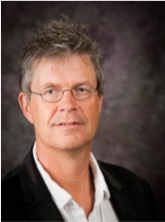 the 73rd Midwest Award from the American Chemical Society. The award was established in 1944 to publicly recognize outstanding achievements in chemistry in the Midwest Region of the American Chemical Society, and is conferred annually on a scientist who has made meritorious contributions to the advancement of pure or applied chemistry, chemical education, and the profession of chemistry. The award was presented on Oct. 19 at the Midwest Regional American Chemical Society Meeting on the University of Kansas campus in Lawrence. Aakeroy is being recognized specifically for his significant contributions in the field of crystal engineering — growing crystals “by design.” He and his coworkers have been remarkably productive in this area, publishing more than 160 manuscripts related to crystal engineering to date, and attracting numerous invitations to present on his research across the globe. They also have received substantial funding from federal agencies and from the chemical industry. In addition to his reseach activities, Aakeroy is also well known as an outstanding lecturer in the freshman chemistry program.
the 73rd Midwest Award from the American Chemical Society. The award was established in 1944 to publicly recognize outstanding achievements in chemistry in the Midwest Region of the American Chemical Society, and is conferred annually on a scientist who has made meritorious contributions to the advancement of pure or applied chemistry, chemical education, and the profession of chemistry. The award was presented on Oct. 19 at the Midwest Regional American Chemical Society Meeting on the University of Kansas campus in Lawrence. Aakeroy is being recognized specifically for his significant contributions in the field of crystal engineering — growing crystals “by design.” He and his coworkers have been remarkably productive in this area, publishing more than 160 manuscripts related to crystal engineering to date, and attracting numerous invitations to present on his research across the globe. They also have received substantial funding from federal agencies and from the chemical industry. In addition to his reseach activities, Aakeroy is also well known as an outstanding lecturer in the freshman chemistry program.
Communication Studies
Sarah Riforgiate published “Identity Work and Tensions in Organizational Internships: A Comparative Analysis” in the Western Journal of Communication. This paper examines an increasingly popular yet underexplored form of organizational employment: internships. Drawing on interviews with 40 interns, this study explores the communicative tensions they faced and how two different groups of interns, satisfied versus dissatisfied, reported their responses to these tensions. Data revealed three key tensions that distinguished the two groups: identity work based on being an inexperienced student worker versus a competent employee, a focus on present versus future, and a preference for close versus distant supervision. The article discusses the implications of using different approaches to manage these tensions on identity work.
Greg Paul published “Beliefs about Victim-Offender Conferences: Factors Influencing Victim-Offender Engagement” in Conflict Resolution Quarterly. Victim-offender conferences provide victims an opportunity to pursue their justice goals while talking directly with their offender. Although research on victims’ conference participation willingness is growing, it has tended to neglect the influence of context factors. Drawing on the theory of planned behavior, the study reported in this article elicited beliefs about justice goals, emotions, perceived support, and external control beliefs related to intent to participate in a victim-offender conference. Analysis indicated that beliefs about justice goals, anticipated emotions, social support, and behavior control influence conference participation willingness. The article identifies implications for research and practice regarding restorative justice and conference participation.
Natalie Pennington, associate professor, was a guest lecturer on Oct. 5 for the University Of South Carolina Upstate Fall Communication Studies Lecture Series where she presented “Political-Interpersonal Conflict In-Person and Online – What happens to our interpersonal relationships when forced with political disagreements online and in person?” Pennington’s research offers answers to this through attention to the spillover effects of social media within interpersonal relationships as they relate to political conversation.
Economics
As part of a workshop on trade and development at the Graduate Institute of Geneva, Associate Professor Peri da Silva presented “Value-Added Exports and U.S. Local Labor Markets: Does China Really Matter?” co-authored with Leilei Shen. The workshop took place on Sept. 12. The focus of the presented paper is the direct contribution of the Chinese economy to changes in U.S. labor market outcomes.
Eisenhower Circle Awards
This year’s outstanding alumni for the Kansas State University College of Arts and Sciences include Kevin Rabas, poet laureate of Kansas; Dave Roth, a Broadway percussionist; and Summer Lewis, co-founder of the international development firm True Roots.
The three awardees received recognition from the college at the eighth annual Eisenhower Circle Celebration on Oct. 19.
The Eisenhower Circle Celebration, established in 2010, is a special event hosted by the College of Arts and Sciences to recognize outstanding alumni, student scholarship winners, and donors. Each year one of the college’s scholarship recipients is invited to speak at the celebration. This year’s speaker was Victor Valdez-Herrera, a junior in economics from Dodge City.
Rabas and Roth received Alumni Merit Awards, which recognize alumni who have demonstrated outstanding achievement in one or more of the following areas: distinguished service, discovery, public engagement, arts and humanities, or entrepreneurship.
Rabas, who received a Master of Arts in English from Kansas State University in  1998, was named the poet laureate of Kansas in April and is chair of Emporia State University’s English, modern languages and journalism department. He has written nine books, including “Lisa’s Flying Electric Piano,” a Kansas Notable Book and Nelson Poetry Book Award winner. Rabas’ plays have been produced across Kansas and in North Carolina and San Diego. His most recent poetry collection, “Songs for My Father: Poems & Stories,” was published by Meadowlark in 2016.
1998, was named the poet laureate of Kansas in April and is chair of Emporia State University’s English, modern languages and journalism department. He has written nine books, including “Lisa’s Flying Electric Piano,” a Kansas Notable Book and Nelson Poetry Book Award winner. Rabas’ plays have been produced across Kansas and in North Carolina and San Diego. His most recent poetry collection, “Songs for My Father: Poems & Stories,” was published by Meadowlark in 2016.
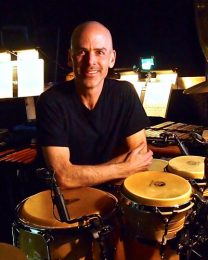 Roth received a Bachelor of Music in applied music from Kansas State University in 1989. He is a freelance percussionist in New York City and has been performing and teaching for 25 years. He has appeared in more than 200 cities worldwide, including the North American and Asian tour of “West Side Story,” the national tour of “Mamma Mia!” and the national tour and European tour of “Smokey Joe’s Cafe.” Roth is active in the Broadway musical theater scene and is currently performing in the revival of “Cats!”
Roth received a Bachelor of Music in applied music from Kansas State University in 1989. He is a freelance percussionist in New York City and has been performing and teaching for 25 years. He has appeared in more than 200 cities worldwide, including the North American and Asian tour of “West Side Story,” the national tour of “Mamma Mia!” and the national tour and European tour of “Smokey Joe’s Cafe.” Roth is active in the Broadway musical theater scene and is currently performing in the revival of “Cats!”
Lewis graduated in 2005 with a Bachelor of Arts in Spanish, sociology and women’s studies. She will receive the college’s Young Alumni Award, which recognizes alumni who have excelled in their professions and provided service, especially humanitarian services, to their communities in the early part of their  career. Lewis is an international development consultant and educator with more than 15 years’ experience in the coffee value chain, fair trade, gender equity, and peace and conflict resolution. As the co-founder of True Roots, a consulting firm specializing in social responsibility initiatives in the global south, Lewis provides the tools and guidance for donors and nonprofit organizations to carry out community development projects. She also teaches online courses for Kansas State University’s gender, women, and sexuality studies department. Formerly of Manhattan, she currently lives in Oaxaca, Mexico.
career. Lewis is an international development consultant and educator with more than 15 years’ experience in the coffee value chain, fair trade, gender equity, and peace and conflict resolution. As the co-founder of True Roots, a consulting firm specializing in social responsibility initiatives in the global south, Lewis provides the tools and guidance for donors and nonprofit organizations to carry out community development projects. She also teaches online courses for Kansas State University’s gender, women, and sexuality studies department. Formerly of Manhattan, she currently lives in Oaxaca, Mexico.
English
 Professor Han Yu published her new book “Communicating Genetics: Visualizations and Representations.” Yu’s research offers strategies to help researchers and writers better communicate scientific research for the general public.
Professor Han Yu published her new book “Communicating Genetics: Visualizations and Representations.” Yu’s research offers strategies to help researchers and writers better communicate scientific research for the general public.
Alumnus Kevin Rabas (MA ’98) was selected for an Arts and Sciences Alumni Merit Award.
Assistant Professor Traci Brimhall had her poem “Fledging” selected as the Poem-of-the-Day for Sept. 26, 2017 by the Academy of American Poets .
University Distinguished Professor Phil Nel has been receiving media coverage for his recent book “Was the Cat in the Hat Black?: The Hidden Racism of Children’s Literature and the Need for Diverse Books” (Oxford, 2017), which is now in its third printing. He has been interviewed by the San Diego Union-Tribune, the New York Times, and the Boston Globe, among other media outlets.
Geography
The Kansas State University Beta Psi Chapter of Gamma Theta Upsilon (GTU), the International Geographical Honor Society, was recently named an Honor Chapter, one of only three chapters (out of 130 worldwide) to be so designated. In order to be recognized as an Honor Chapter, a chapter must increase the number of inductees over a period of several years, provide substantial leadership to promote the discipline of geography at its home university, and sponsor frequent activities among the local chapter members. Since 2013, the Beta Psi Chapter at Kansas State University has been recognized four times as an honor chapter. John A. Harrington, Jr. is the faculty sponsor of the Beta Psi Chapter.
Geology
Karin Goldberg and Pamela Kempton participated in the Sparks for Change Institute, a National Science Foundation (NSF) Geoscience Opportunities for Leadership in Diversity (GOLD) funded program aimed at increasing diversity and broadening participation within the geosciences. The institute, hosted by the University Corporation for Atmospheric Research (UCAR) in Boulder, Colorado, took place Sept. 18-20. Among other activities, the workshop fostered the development of a logic plan to increase the participation of under-represented minorities in the geosciences. The representatives of the Department of Geology at K-State focused on actions directed at the recruitment of Hispanics as an opportunity to increase diversity and simultaneously address an issue of decreasing enrollments at the undergraduate level.
Geology faculty Abdelmoneam Raef and Matthew Totten and their students Andrew Vohs and Aria Linares, reported unprecedented utilization of complex-trace seismic data attributes as a hydrocarbon indicator in the subsurface carbonate rocks of the Viola Formation in Kansas. The research findings were published in Pure and Applied Geophysics in September. This work represents a significant step forward in coupling seismic reflection data attributes modeling and analysis with sedimentary petrography and petrophysical rock properties in order to understand seismic response of hydrocarbon pay zones.
Journalism and Mass Communication
Barbara DeSanto, public relations specialist and associate director of graduate studies in the A.Q. Miller School of Journalism and Mass Communications, gave a public lecture in Ackert Hall on Sept. 19. DeSanto shared communication science’s most important principles to illustrate how facts and information can help any science practitioners become outstanding public speakers. Seminar participants had the opportunity to practice these new communication science skills. The talk was presented for students participating in the capstone course of the natural resources and environmental science secondary major and was open to the general public as part of the Natural Resources and Environmental Science Seminar Series. Undergraduate students interested in natural resources, environmental science, and sustainability issues were especially encouraged to attend. The full talk can be viewed here.
Bonnie Bressers presented the co-authored paper “Civically Engaged Youth: ‘Doing that Volunteering Stuff’ in rural Kansas” at the 18th Annual Conference of the Engagement Scholarship Consortium held in Birmingham, Alabama, Sept. 25-27. Co-authored by Sam Mwangi, Steve Smethers, David Kaye and Levi Smith, the paper continued researchers’ examination of the The Kiowa County (KS) Media Center’s mission to provide a high-tech portal for community news and information content generated by the residents of Kiowa County. The community’s propensity to participate has been uncertain since the Media Center’s founding in 2012, but the current research suggested that secondary-school students were willing contributors. Furthermore, the student-volunteers at the Media Center were significantly more likely to believe they would engage in other aspects of civic life than their secondary-school peers who volunteered with community programs other than the Media Center.
Kimetris Baltrip was selected to receive funding to attend the McCormick Specialized Reporting Institute at the CBS 2 Broadcast Center in Chicago, Sept. 5-7.The institute, which was titled “Police and Deadly Force: Finding Stories in the Data,” was attended by about 40 accomplished journalists and journalism educators who learned about ongoing research and social science research methods that are helping newsrooms cover racial disparities in U.S. policing.
Return to top
Tom Hallaq received a 2017 Videographer Award for “Slow and Low: The Story of the Kansas Ag Pilot.” As written in his award letter: “The goal of the Videographer Awards is to identify and recognize the artisans who excel in the scope of their own environment. Winners range from network news operations to local cable access…from large production companies to freelancers…from international advertising agencies to student producers. There were about 1,400 entries from throughout the United States and 13 other countries in the Videographer Awards 2017 competition.” Hallaq’s work was judged to be “deserving of industry-wide recognition.” View “Slow and Low” on Vimeo.
JMC students Rafael Garcia and Braxton Jones were selected to attend the 2017 International Radio and Television Society (IRTS) Multicultural Career Workshop in New York City. The conference, which is in its 33rd year, presents an opportunity for multicultural students to network with representatives of major media companies. Recruiters who attend the workshop come from some of the industry’s most popular media companies, including BET, CBS HBO, MTV and Time Inc. In addition to networking, the conference provides students with greater insight on how they can embark on a career in advertising, digital media, marketing, production or sales.
Garcia, a junior from Emporia, Kansas, and the current editor-in-chief of the Kansas State Collegian, seeks to become a feature writer, while Jones, a senior from Wichita, Kansas, desires to launch a career in sports broadcasting. Both students are majors in the A.Q. Miller School of Journalism and Mass Communications. This is Jones’ second time attending the IRTS worskhop and Garcia’s first.
Modern Languages
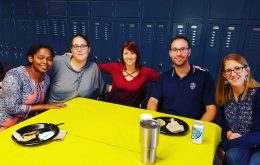 German faculty and graduate students attended the Kansas Association of Teachers of German (KATG) annual meeting, Deutsches Wochenende, in Olathe. With a 30+ year history, KATG’s annual meeting is one of the oldest continuous immersion experiences for German teachers in the United States. This year, assistant professor Janice McGregor was appointed president of the organization and graduate student Natacha Mally was elected KATG treasurer. Associate professor Necia Chronister gave a workshop on teaching integration in the German language classroom.
German faculty and graduate students attended the Kansas Association of Teachers of German (KATG) annual meeting, Deutsches Wochenende, in Olathe. With a 30+ year history, KATG’s annual meeting is one of the oldest continuous immersion experiences for German teachers in the United States. This year, assistant professor Janice McGregor was appointed president of the organization and graduate student Natacha Mally was elected KATG treasurer. Associate professor Necia Chronister gave a workshop on teaching integration in the German language classroom.
Music, Theatre and Dance
 Frederick Burrack, Ruth Gurgel, Phil Payne, Jeffrey Ward, and undergraduate researchers Stephanie Goering, Logan Caywood, Alicia Jackson, Shelby Goss, Elias Gillespie, Ryan Dillon, and Talia Falcon presented at the Symposium for Music Teacher Education: Imagining Possible Futures in Minneapolis in September. Read more about their research topics here.
Frederick Burrack, Ruth Gurgel, Phil Payne, Jeffrey Ward, and undergraduate researchers Stephanie Goering, Logan Caywood, Alicia Jackson, Shelby Goss, Elias Gillespie, Ryan Dillon, and Talia Falcon presented at the Symposium for Music Teacher Education: Imagining Possible Futures in Minneapolis in September. Read more about their research topics here.
Slawomir Dobrzanski, professor of music, presented a lecture on the 19th-century Polish influences on American piano music at the International Interdisciplinary Conference “Poles and Polish Diaspora in North America,” which was Sept. 21-22 at the Emigration Museum — Muzeum Emigracji — in Gdynia, Poland.
Amy Rosine, associate professor of music, and collaborator Sandra Mosteller, who perform as Sorores Duo and have been selected as a semi-finalist for the American Prize in Chamber Music Performance. The American Prize is a series of new, non-profit national competitions in the performing arts providing cash awards, professional adjudication and regional, national and international recognition for the best recorded performances by ensembles and individuals each year in the United States at the professional, college/university, church, community and secondary school levels. Administered by Hat City Music Theater, Inc., a nonprofit organization based in Danbury, Connecticut, The American Prize was founded in 2009 and is awarded annually.
 Anna Marie Wytko, associate professor of saxophone, recently served as featured American saxophonist-in-residence at the fourth International Saxophone Festival Sf Montevideo, Uruguay. Wytko performed as soloist and recitalist, in addition to conducting teaching workshops for students from around the world.
Anna Marie Wytko, associate professor of saxophone, recently served as featured American saxophonist-in-residence at the fourth International Saxophone Festival Sf Montevideo, Uruguay. Wytko performed as soloist and recitalist, in addition to conducting teaching workshops for students from around the world.
Frederick Burrack, professor of music and director of assessment, is one of 15 people selected to participate on the Knowledge Development Task Force. This task force, organized by the Association for the Assessment of Learning in Higher Education, will meet monthly for two years with a mission to advance the body of knowledge devoted to assessing and improving student learning in higher education. The goals of the task force include expanding key strategies of knowledge development; initiating a database of learning identifiers at all levels of higher education; creating a bibliography of the top 100 articles on the concept of knowledge development in each decade from 1970 on identifying centrality of changes over time; and identifying problems that could be solved in the next decade in relation to assessment leadership, student learning and faculty development.
John Ashburn, Ph.D. Candidate in Curriculum and Instruction (Music Education cognate), has been offered and accepted a saxophone position with the United States Marine Band upon completion of his doctoral work. John is a student of Anna Marie Wytko.
Psychological Sciences
Michael Young, head of Psychological Sciences, was elected to the Executive Board of 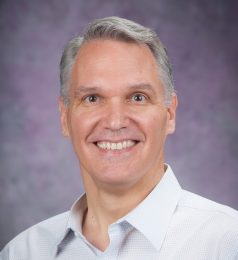 the Council of Graduate Departments of Psychology (COGDOP). COGDOP is a national organization comprised of department heads and chairs of psychology departments that have Masters or Ph.D. programs. Young has benefited from COGDOP’s new chair training and his regular attendance at their annual meeting, and he wanted to pay those benefits forward to future generations of psychology department leaders.
the Council of Graduate Departments of Psychology (COGDOP). COGDOP is a national organization comprised of department heads and chairs of psychology departments that have Masters or Ph.D. programs. Young has benefited from COGDOP’s new chair training and his regular attendance at their annual meeting, and he wanted to pay those benefits forward to future generations of psychology department leaders.
 Jin Lee, assistant professor, received a $47,502 sub-award as part of a $1.5M Assistance to Firefighters Grant Program (AFG) from the Federal Emergency Management Agency (FEMA) and the Department of Homeland Security (DHS). His project is titled “Stress and violence in fire-based EMS responders.”
Jin Lee, assistant professor, received a $47,502 sub-award as part of a $1.5M Assistance to Firefighters Grant Program (AFG) from the Federal Emergency Management Agency (FEMA) and the Department of Homeland Security (DHS). His project is titled “Stress and violence in fire-based EMS responders.”
Physics
Eleanor Sayre, associate professor of physics, is the university’s 2017-2018 Fulbright scholar to the University of Calgary in Alberta, Canada. Sayre is researching why undergraduates pursue science-related careers and how they develop their professional identity as scientists.Sayre is the recipient of National Science Foundation’s Improving Undergraduate STEM Education grants for two current projects: one studying PhysPort, an online professional development tool used by physics professors, and another, the Mathematization project, which studies how upper-division physics students use math across multiple courses. She has been the principal investigator for five NSF awards and several Physics Education Research Topical Group awards. She has authored more than 50 peer-reviewed publications. Read more about Sayre’s research here.
Two Kansas State University faculty members are among four recipients of one of the state’s most prestigious recognition for scholarly excellence, the Higuchi-KU Endowment Research Achievement Awards. Vara Prasad, professor of agronomy, is the recipient of the Irvin E. Youngberg Award in Applied Sciences, and Bharat Ratra, university distinguished professor of physics, is the recipient of the Olin K. Petefish Award in Basic Sciences.
Ratra is known for his work on dynamical dark energy and on the quantum-mechanical generation of energy density and magnetic field fluctuations during inflation. His current research focuses on developing and testing cosmological models for the large-scale matter and radiation distributions in the universe. A primary research goal is to test Einstein’s general relativity on extremely large spatial and temporal scales, in addition to determining the geometry and contents of the universe and how large-scale structure in the universe was formed.
In 1988, Ratra, with Jim Peebles of Princeton University, proposed the first dynamical dark energy scalar field model. Dark energy is responsible for causing the expansion of the universe to accelerate. With advances in observational astronomy, new data may become available over the next decade that might establish the Ratra-Peebles mechanism as the best description of dark energy. Ratra also proposed the first inflation model that can generate, from quantum fluctuations, a large-enough primordial cosmological magnetic field to be able to explain observed galactic magnetic fields.
Sociology, Anthropoloy, and Social Work
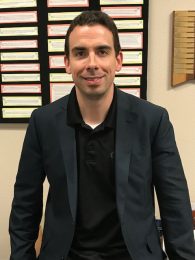 Kevin Steinmetz, criminologist on faculty within the Department of Sociology, Anthropology and Social Work, coauthored “Technocrime and Criminological Theory” with Matt Nobles. Cybercrime, computer crime, Internet crime, and technosecurity have been of increasing concern to citizens, corporations, and governments since their emergence in the 1980s. Addressing both the conventional and radical theories underlying this emerging criminological trend, including feminist theory, social learning theory, and postmodernism, this text paves the way for those who seek to tackle the most pertinent areas in technocrime. Technocrime and Criminological Theory challenges readers to confront the conflicts, gaps, and questions faced by both scholars and practitioners in the field. This book serves as an ideal primer for scholars beginning to study technocrime or as a companion for graduate level courses in technocrime or deviance studies. The volume is set for release in 2018.
Kevin Steinmetz, criminologist on faculty within the Department of Sociology, Anthropology and Social Work, coauthored “Technocrime and Criminological Theory” with Matt Nobles. Cybercrime, computer crime, Internet crime, and technosecurity have been of increasing concern to citizens, corporations, and governments since their emergence in the 1980s. Addressing both the conventional and radical theories underlying this emerging criminological trend, including feminist theory, social learning theory, and postmodernism, this text paves the way for those who seek to tackle the most pertinent areas in technocrime. Technocrime and Criminological Theory challenges readers to confront the conflicts, gaps, and questions faced by both scholars and practitioners in the field. This book serves as an ideal primer for scholars beginning to study technocrime or as a companion for graduate level courses in technocrime or deviance studies. The volume is set for release in 2018.
Arthur Durband, associate professor of anthropology, co-authored a chapter (with Australian colleague Colin Pardoe) titled “Tooth Ablation along the Murray River in Southeastern Australia” in “A World View of Bioculturally Modified Teeth,” a forthcoming book from the University Press of Florida.
K-State archaeology faculty and six undergraduate anthropology students recently participated in the 75th annual meeting of the Plains Anthropological Society Oct. 4-7 in Bismarck, North Dakota.
Brad Logan, research associate professor, presented “An Unquixotic Quest: Excavation of the Quixote Site (14JF420), a Late Woodland Occupation in the Delaware River Drainage, Northeastern Kansas.” His presentation summarized fieldwork and initial findings from the June 2017 Kansas Archaeological Training Program, a cooperative endeavor of the Kansas Historical Society, Kansas Anthropological Society, Logan on behalf of Kansas State University and public participants.
Professor Lauren W. Ritterbush and Jakob Hanschu, junior in anthropology and geography, discussed “Researching and Preserving Burial Mounds: An Investigation in the Flint Hills” to update present knowledge gained about prehistoric mortuary features through the 2016 Kansas Archaeological Field School. Twelve K-State anthropology students participated in this research while gaining valuable training in professional archaeological data collection techniques and mortuary site preservation. Hanschu also presented a poster of undergraduate research titled “Quantifying the Qualitative: Locating Burial Mounds in North-Central Kansas.” Through his independent research project, Hanschu used geographic information system software to map locations of recorded prehistoric mortuary features in north-central Kansas, then analyzed their distribution relative to topographic and hydrologic features in order to identify spatial patterns useful for modeling areas of high potential for past burial activities. A pedestrian archaeological survey was used to test the predictive nature of the proposed models. Through identification of these features, protection is enhanced as required under the state of Kansas Unmarked Burial Sites Preservation Act.

